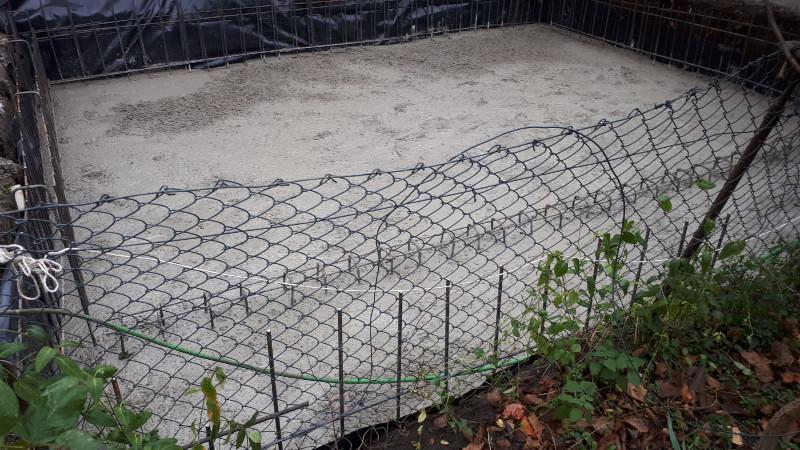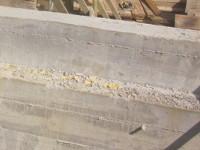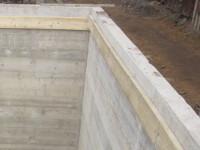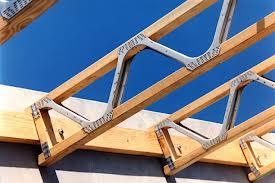
Phil Sacre
Members-
Posts
9 -
Joined
-
Last visited
Personal Information
-
Location
Epping, Essex
Recent Profile Visitors
The recent visitors block is disabled and is not being shown to other users.
Phil Sacre's Achievements

New Member (2/5)
4
Reputation
-
You will need a party wall act agreement to dig deeper than the other bungalow's foundations because you will excavate within 3m of them. Gus has provided a very useful description of a soil investigation on another 'basement' thread.
-
Indeed Gus, very generous and informative. I would add that the basement and timber frame might be buoyant. It is building control who decide about a fire escape. If the basement is seen as a space that could be habitable accommodation in the future it will need building with a fire escape. You mentioned an outside door but not an internal staircase. I have found soil investigstion specialists quote prices all over the place. I would begin by phoning half a dozen at least. If you phone Gus and he can't cope with his workload he will stick a big lump on top. If he has nothing on he might knock 10% off. Your basement will displace water the area of the basement plus outside staircase times the depth beneath that where water flows through the ground. This might be 3.3m to base of excavation less the top of the yellow clay shown at 6 feet deep on the second log. It could be 1.5m but it needs to be known. The concrete is likely to be 300mm thick floor slab plus 300mm thick around the perimeter 2.95m or thereabouts high. Add all that up and, at 3.5 tonnes per cubic metre, it needs to equal the mass of water displaced. You should have 10% spare mass but I haven't included the timber frame etc. If you are nearly there but not quite; make the floor slab bigger (adding a heel) and backfill with heavy stuff that will press down on the heel adding mass to resist uplift. If you are nowhere near heavy enough then anchor piles that would need to be sucked up with the basement would tend to be the solution. I don't think you are remotely in that territory.
-
It might depend on your screed. Liquid or stiff? You don't want a liquid getting in joints making your insulation float. You don't want liquid getting under a poly sheet either.
-
Potential single-storey self build in SE
Phil Sacre replied to Bournbrook 's topic in Introduce Yourself
I would think that excavating a metre, so that the ground floor was 1m lower with the ridge where it was always already going to be, is going to add costs for excavator, operator, muckaway lorries, more concrete (most of it waterproof), reinforcing steel, timber for formwork a lot of which could end up in your house, labour and concrete pumps. You will save something on footings. Are you in chalk? Will you find chalk 1m down? Chalk drains. Very advantageous for a basement structure. I did exactly this to be able to build a studio at the end of the garden without building any higher than the neighbour's shed. If 140 sq m like your neighbour: 13T excavator would dig this in a day but would need to hang around for 10 lorries to fill. Perhaps 3 days. About £900 with delivery and collection. (VAT zero rated if digger comes with its own operator) £450. 140 cubic metres of soil is about 10 trucks. About £3000. Or you could pay less for a smaller digger and pay more for grab lorries. Up to 60 cu m of waterproof concrete £12,000. Steel. Max 2 tonnes. Max £1000 with delivery. Timber about £3000. Less if you will have to buy some but you re-use this instead. Labour. I don't pay myself so I don't know. Perhaps £15,000? 2 pumps £1000. That totals about £36,000 plus you will have more cost fitting out the extra rooms in the roof - but that is the gain. Extra rooms, added house value. Less some of the cost of footings. -
Potential single-storey self build in SE
Phil Sacre replied to Bournbrook 's topic in Introduce Yourself
VAT. The builder claims VAT back quarterly. I know a self builder who created a limited company, registered for VAT, claimed the VAT back quarterly. Shut the company. -
`Basements, and the change to B.S.8102
Phil Sacre replied to Big Jimbo's topic in General Structural Issues
Hi all. The new standard deals with everything from convertng a little Victorian cellar to a 4+ storey deep basement structure beneath a new nuclear power station. Therefore some sifting out what suits you is required. Basement waterproofing has suffered from every tradesman seeing 'internal drainage, sump and pump' on the drawings and they instantly know that if their work leaks it will have been covered over and they won't get blamed. That's how someone above paid for all the work then paid more for fixing problems. Internal drainage systems made the preceding structure workmanship worse and worse and worse. The new emphasis is on keeping water out. Yes, the tradesmen are gong to get a shock when they are dragged back a few months later to fix all their leaks before they get their final payment. A new-build, single storey deep basement for a new dwelling or new extension should be built from waterproof reinforced concrete all poured and compacted with care. The concrete will be waterproof. Any cracks and voids need to be repaired. The Standard says that one form of waterproofing should be continuous from the base of the basement floor slab to 150mm above outside ground level or DPC, so a narrow upstand in the waterproof reinforced concrete replacing the first course of blocks achieves that. Neither beam and block, steel beams, precast planks or composite steel floors work with the upstand, so they are out. ICF and twin wall (like Glatthaar Keller) are specifically mentioned in the Standard as risky because you might have to partly destroy either to find and stop leaks. (Why would you insulate both sides of a wall anyway?) Sticky-back membrane on the outside seems to be assumed to not work very well either, but what it says is that a bit of membrane might cover a crack and protect that crack from leaking. The term that describes concrete self healing cracks is called autogenous healing. You can look that up. Essentially, retaining walls need extra horizontal steel to restrict crack widths to what will self heal. The extra steel makes the concrete crack a lot more often but each crack is much thinner. Some unused cement grain exposed by the crack finds some unused water and they react and fill the crack with concrete. It needs to be noted that one form of waterproofing is required and two are preferable. If one of those is external drainage that works by gravity and is roddable, the other need only be the concrete. It needs to be noted that an internal drainage system, that removes water but does not stop it getting through the structure, is no longer a waterproofing option. It does not count toward your two. I would usually suggest that a bitumen based waterproof paint all over everything inside is the best second defence. Phil -
New-build timber frame in East Suffolk
Phil Sacre replied to Alan Ambrose's topic in Introduce Yourself
Hi Alan. The soil investigation is your eyes into the ground before you commit to digging it out. If there was a problem that you couldn't afford to overcome, the soil investigation reduces your risk considerably. Beam and block over a basement is never the best idea because the beam and block sits on the retaining wall and that means that during a storm water will find its way under your beams and trickle down the inside of your basement walls. In addition, BS8102:2022 (basement waterproofing) requires you to keep water out and requires you to have one form of waterproofing from the base of your floor slab to at least 150mm above outside ground level or DPC. Much simpler to build with waterproof concrete and to narrow your retaining wall just beneath outside ground level to create an outside ledge for brickwork and continue that upstand up as if it was your first concrete block. Engineered timber joists fixed against that upstand get over all the waterproofing issues. Phil -
The troubles with a pump in a sump are firstly you probably wouldn't be insured going that deep and secondly you disturb a lot more ground digging trenches to the sump - plus more cost from more dig, more muckaway, more labour and more concrete. Whereas a Saniflo type pump is on the surface, boxed in and a lot less heavy to get a wet wipe out when it blocks. Some macerator pumps macerate wet wipes.
-
Stabbed by the soil investigation!
Phil Sacre commented on mike2016's blog entry in The Fun Irish (House)
The issue is clay plasticity and its tendency to expand as it re-wets (heave). This causes subsidence. Trees make heave worse because they dry the clay over the summer and it re-wets more over the winter.






